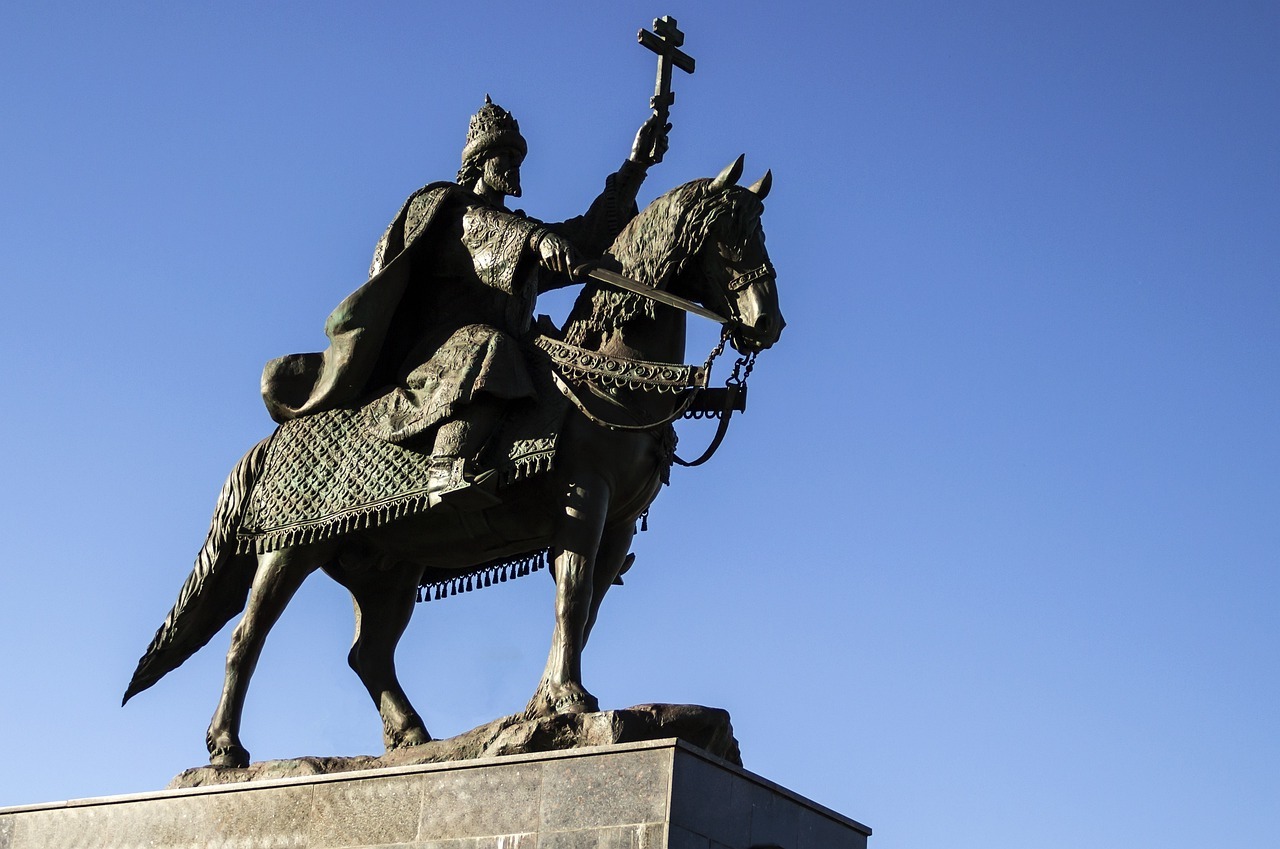
Did you know that the Ivan the Terrible statue in Russia has sparked controversy since its unveiling? This imposing monument, dedicated to one of Russia's most infamous rulers, stands tall in the city of Oryol. Erected in 2016, the statue has been a topic of heated debates among historians, locals, and tourists alike. Some view it as a tribute to a powerful leader who expanded Russian territory, while others see it as a glorification of a tyrant known for his brutal reign. Standing at 13 meters high, the statue's sheer size and detailed craftsmanship make it a striking landmark. But why does it stir such strong emotions? Let's delve into 20 intriguing facts about this controversial monument and uncover the layers of history, artistry, and public opinion surrounding it.
Ivan the Terrible Statue: A Monument of Controversy
The Ivan the Terrible statue stands as a symbol of Russia's complex history. This monument has sparked debates and fascination alike. Let's delve into some intriguing facts about this statue.
-
First Statue of Ivan the Terrible: Despite his historical significance, the statue in Oryol, Russia, unveiled in 2016, is the first-ever monument dedicated to Ivan the Terrible.
-
Location Controversy: The statue's location in Oryol, a city Ivan founded in 1566, was chosen to honor his legacy. However, many opposed this, arguing that his brutal reign shouldn't be celebrated.
Design and Construction
The design and construction of the statue have their own stories. From the sculptor's vision to the materials used, each detail adds to its uniqueness.
-
Sculptor Oleg Molchanov: Renowned sculptor Oleg Molchanov designed the statue, aiming to capture Ivan's complex personality.
-
Bronze Material: The statue is made of bronze, a material chosen for its durability and historical significance.
-
Height and Weight: Standing at 4 meters tall and weighing several tons, the statue is an imposing figure.
Historical Significance
Understanding the historical context of Ivan the Terrible helps explain why this statue is so controversial.
-
First Tsar of Russia: Ivan IV, known as Ivan the Terrible, was the first ruler to be crowned as Tsar of All Russia in 1547.
-
Oprichnina: Ivan established the Oprichnina, a state policy that led to mass repressions, public executions, and confiscation of land from the nobility.
-
Expansion of Russia: Despite his brutal methods, Ivan expanded Russian territory significantly, including the conquest of Kazan and Astrakhan.
Public Reaction
The public's reaction to the statue has been mixed, reflecting the divided opinions about Ivan the Terrible's legacy.
-
Protests and Petitions: Many locals and historians protested the statue's erection, with petitions circulating to have it removed.
-
Supporters' View: Supporters argue that the statue is a necessary reminder of Russia's history, both good and bad.
Symbolism and Interpretation
The statue's symbolism and interpretation vary widely, depending on one's perspective of Ivan the Terrible.
-
Dual Nature: The statue aims to reflect Ivan's dual nature as both a nation-builder and a tyrant.
-
Facial Expression: The sculptor gave Ivan a stern, contemplative expression, symbolizing his complex legacy.
Cultural Impact
The statue has had a significant cultural impact, influencing art, literature, and public discourse.
-
Art Exhibitions: The statue has inspired various art exhibitions and discussions about historical memory in Russia.
-
Literary References: Ivan the Terrible's figure, including the statue, has been referenced in numerous literary works, highlighting his lasting impact on Russian culture.
Political Implications
The statue also has political implications, reflecting current attitudes towards Russia's past and its leaders.
-
Government Support: The Russian government supported the statue's erection, signaling a willingness to confront and acknowledge historical complexities.
-
Historical Revisionism: Critics argue that the statue represents a form of historical revisionism, attempting to sanitize Ivan's brutal reign.
Educational Value
Despite the controversy, the statue serves an educational purpose, prompting discussions about history and memory.
-
School Visits: Schools in Oryol often organize visits to the statue, using it as a tool to teach students about Russian history.
-
Historical Debates: The statue has sparked numerous debates among historians, contributing to a deeper understanding of Ivan the Terrible's era.
Future of the Statue
The future of the Ivan the Terrible statue remains uncertain, with ongoing debates about its place in modern Russia.
-
Potential Relocation: Some propose relocating the statue to a museum where it can be contextualized more appropriately.
-
Preservation Efforts: Others advocate for its preservation as a public monument, arguing that it serves as a crucial reminder of Russia's complex past.
Final Thoughts on Ivan the Terrible Statue
Ivan the Terrible Statue stands as a testament to a complex and controversial figure in Russian history. This monument, with its imposing presence, captures the essence of Ivan IV's reign, marked by both great achievements and brutal actions. The statue not only serves as a reminder of the past but also sparks discussions about leadership, power, and legacy.
Visitors to the statue can appreciate the artistry and craftsmanship that went into its creation. It's a place where history buffs, tourists, and locals alike can reflect on the impact of Ivan the Terrible's rule. Whether you're fascinated by Russian history or simply enjoy exploring significant landmarks, this statue offers a unique glimpse into a pivotal era.
In the end, the Ivan the Terrible Statue is more than just a monument; it's a piece of history that continues to provoke thought and conversation.
Was this page helpful?
Our commitment to delivering trustworthy and engaging content is at the heart of what we do. Each fact on our site is contributed by real users like you, bringing a wealth of diverse insights and information. To ensure the highest standards of accuracy and reliability, our dedicated editors meticulously review each submission. This process guarantees that the facts we share are not only fascinating but also credible. Trust in our commitment to quality and authenticity as you explore and learn with us.


